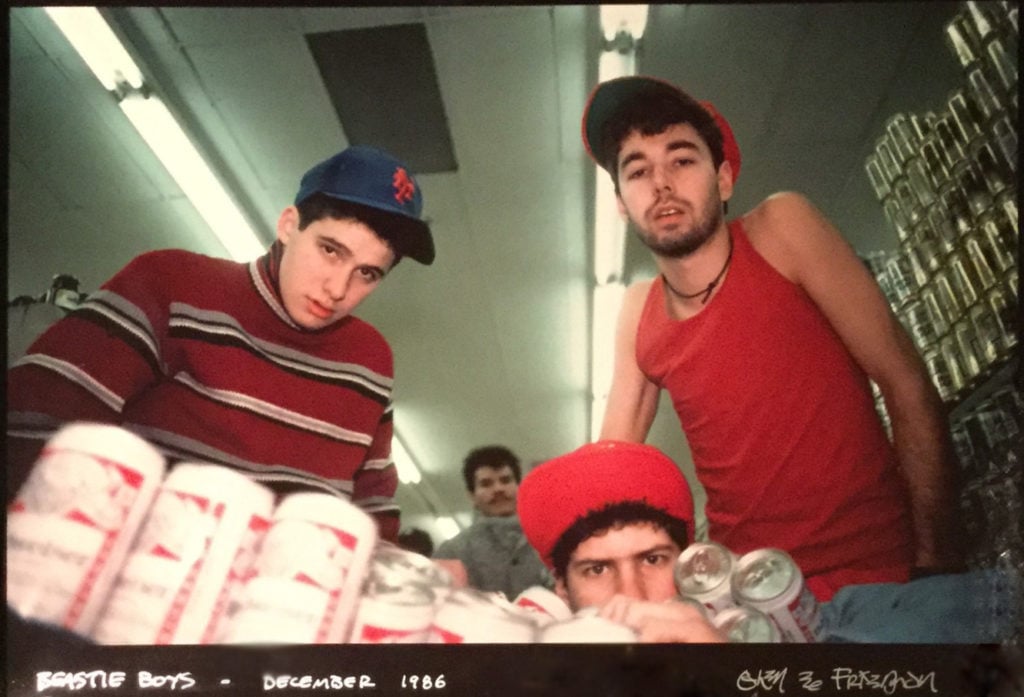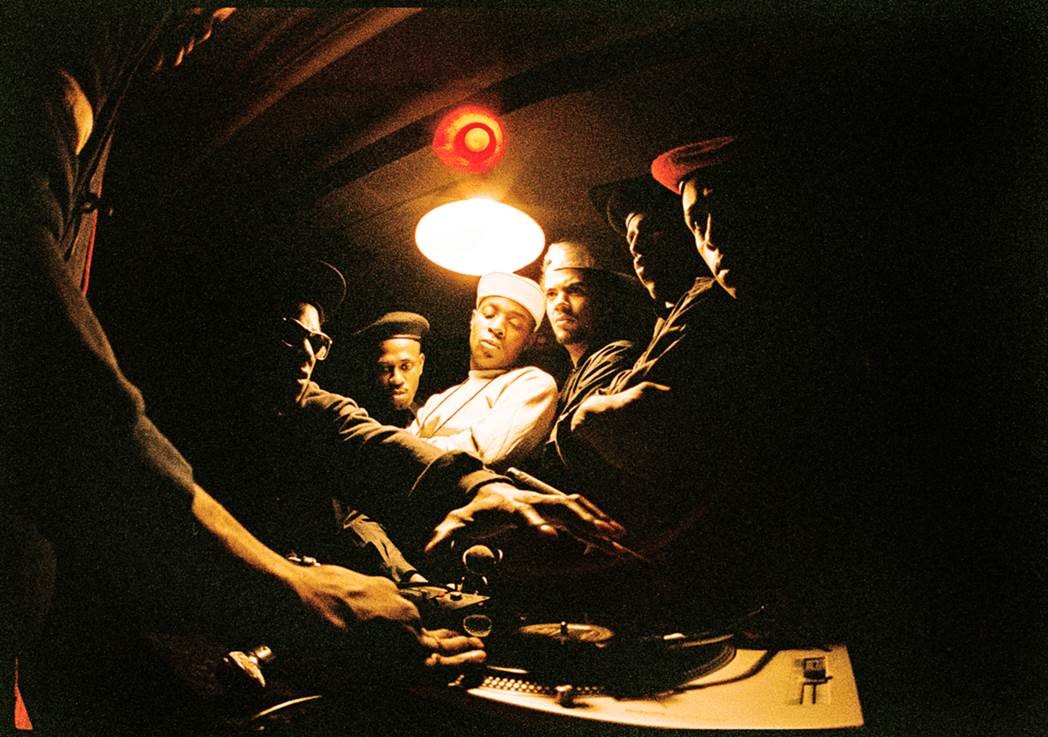Art & Exhibitions
The Real Stories Behind Three Iconic Shots from artnet’s Hip Hop Photography Sale
Ever wonder what it's like to photograph a hip hop legend?

Ever wonder what it's like to photograph a hip hop legend?

Cait Munro

Imagine photographing some of hip-hop’s most iconic personas—Biggie, Tupac, the Beastie Boys, Run-DMC—at the start of their careers, before all of the money, controversy, fame, and tragedy struck. It’s undoubtedly the dream of many photographers and hip-hop heads alike, but for Dana Lixenberg, Glen E. Friedman, and the other photographers featured in artnet’s “Represent: Iconic Hip-Hop Photography” auction, it’s just another day on the job.
Lixenberg, a Dutch photographer and filmmaker currently living in Amsterdam, shot the colorful portrait of rapper Biggie Smalls wearing what appears to be a colorful Coogi sweater and counting a stack of money behind slick sunglasses for Vibe magazine in 1996.
“At the time, he was famous, yes, but nowhere near as famous as he is now,” she recalled in a phone interview with artnet News. “He really became such an iconic person, and this is such an iconic image.”
Back in those days, Lixenberg remembers, editors rarely attended shoots, and styling teams were far less ubiquitous. Rapper P. Diddy (then known as Puff Daddy) was on hand giving styling advice, but the wad of cash Biggie’s clutching came about organically.
“It was a very hectic shoot,” Lixenberg says. “There were a lot of people around, doing things, ordering stuff. And at one point, he needed someone to run an errand and he just pulled out this wad of money with a rubber band around it…He was just being himself, kind of showing off, but it made the photo.”
It wasn’t Lixenberg’s first time photographing the musical legend, but it was indeed one of the more memorable. “Biggie was cool,” she laughs, “He was usually just kind of eating his pizza and waiting to come on.”
These days, Lixenberg’s lens is trained less on celebrities, and more on everyday people—specifically, those living on the fringes of society. For her recent book Imperial Courts, 1993–2015, she’s documented life at a Los Angeles housing public housing project over the course of a 20 year period.

Glen E. Friedman, Beastie Boys (1986
Cibachrome
11 × 14 in.
Est. 3,500–4,500 USD
Glen E. Friedman began his career documenting the California punk scene in the 1980s through bands like the Dead Kennedys and Black Flag. But as punk lost its edge, he was drawn to the hip-hop community, which he describes as “punk’s natural successor” in an interview with artnet News.
He quickly became friends with the Beastie Boys, and documented them in one of their first photo shoots.
“Their first record had either just come out or was just about to come out,” he says, “and no one knew where it was going to go, but we knew we were going to need a lot of photos.”
The crew spent an afternoon wandering the streets and shops of downtown Manhattan and photographing their antics. The Cibachrome image featured above was taken, Friedman recalls, at Sloan’s Market in Chelsea. “Which I think is now a CVS,” he says dryly.
“There were a whole lot of fun, goofy shots, because that’s just the way those guys were,” he recalls.

Glen E. Friedman
Public Enemy, 1986
Chromogenic print
16 × 20 in.
Est. 8,500–9,500 USD
Both the Beastie Boys shot and Friedman’s photo of hip-hop group Public Enemy were taken the same year, and both of the artist proofs on sale have traveled around the world as part of Friedman’s delicately-titled show “FUCK YOU ALL,” which has been exhibited since 1997 everywhere from the Canary Islands to Tokyo.
The Public Enemy shoot took place in Hempstead, New York and was conceptualized to look like an average house party. “[Producer] Rick Ruben really wanted it to look as shitty as possible,” he said. “He wanted me to shoot it with a pocket Instamatic camera, and I said I wouldn’t do that. But the compromise that I made is that I bought the film that night at the supermarket…It was the cheapest film you could get.”
The group had wanted to throw an actual party, but by the time the crew made it out to Hempstead and recreated the look and feel of such a gathering, it was 2 a.m. and freezing cold.
“But we did the shot,” Friedman recalls. “Chuck [D] is looking down, because of course, he’s the leader. He doesn’t need to look at the camera. His eyes are on the turntable. His eyes are on the prize.”
Works from “Represent: Iconic Hip Hop Photography” will be available for online bidding on artnet Auctions from November 12–19, 2015.